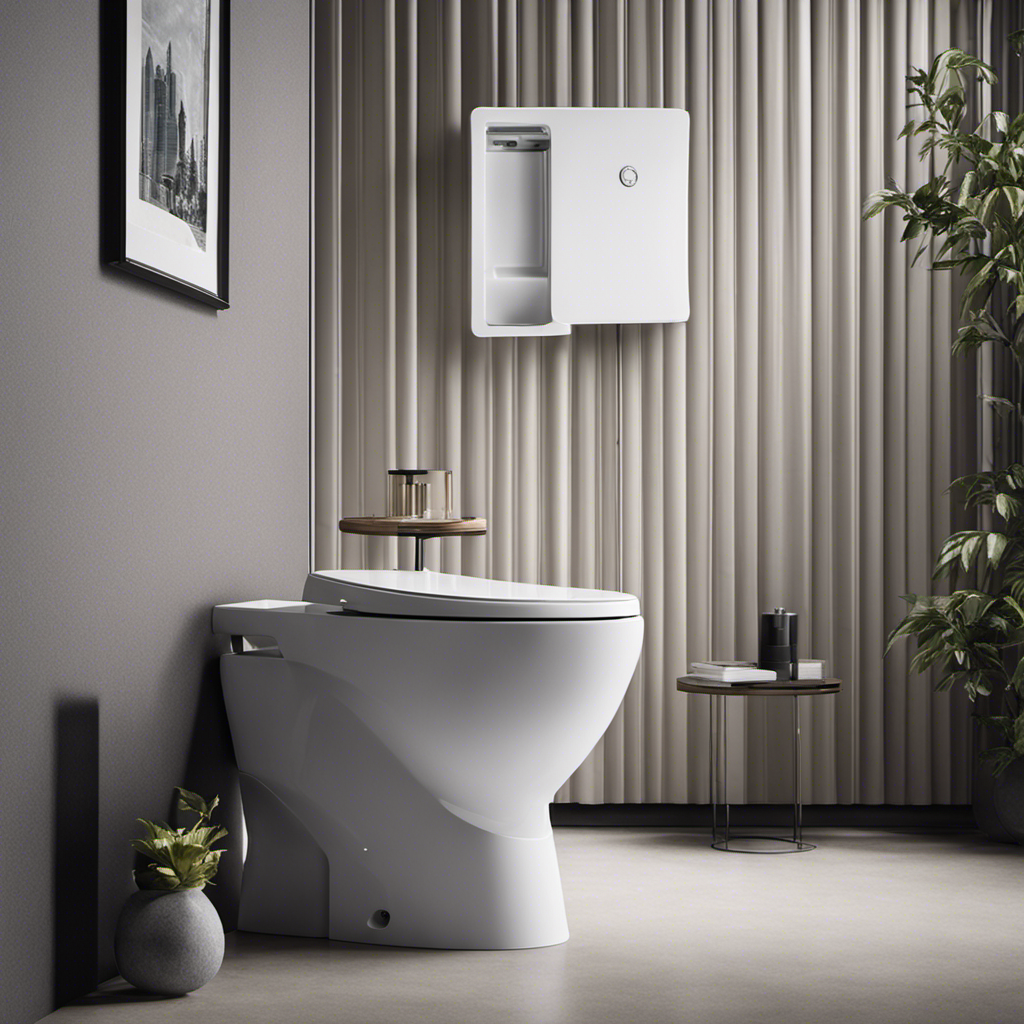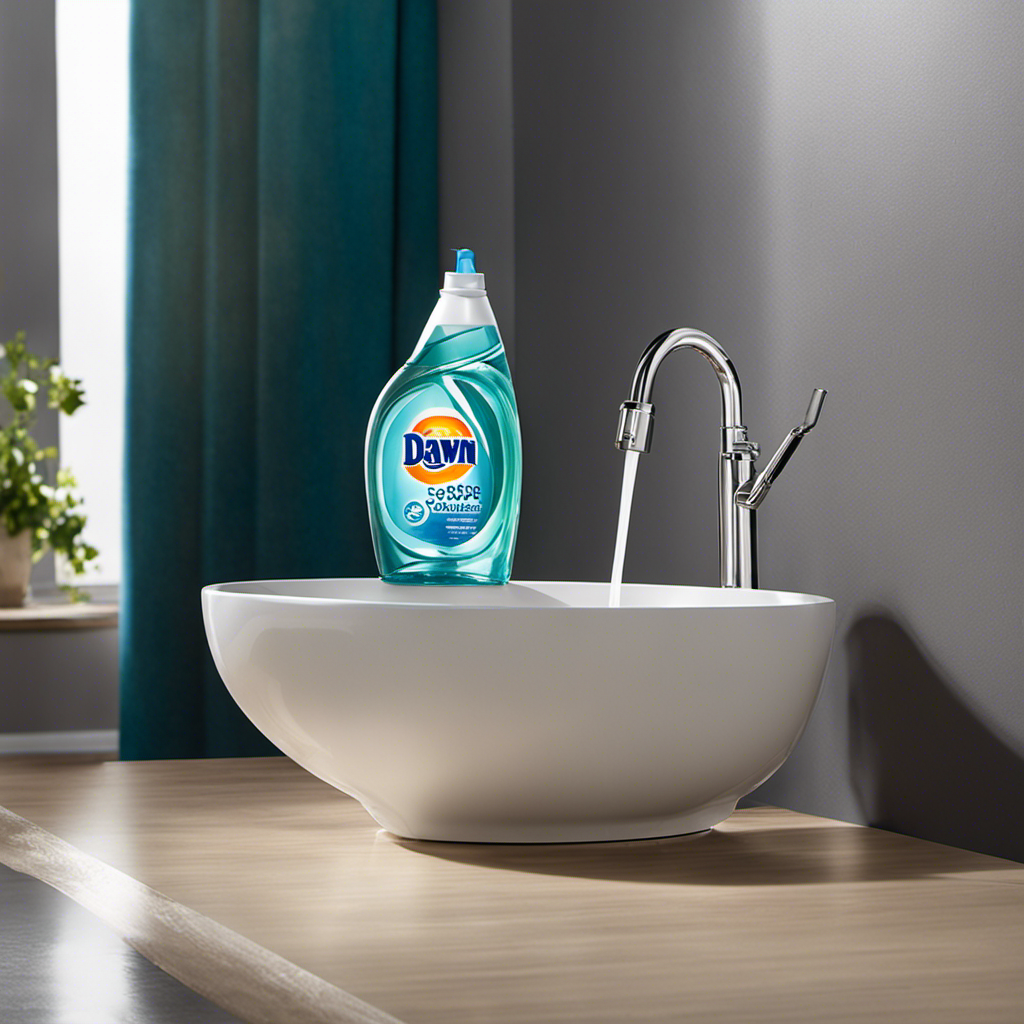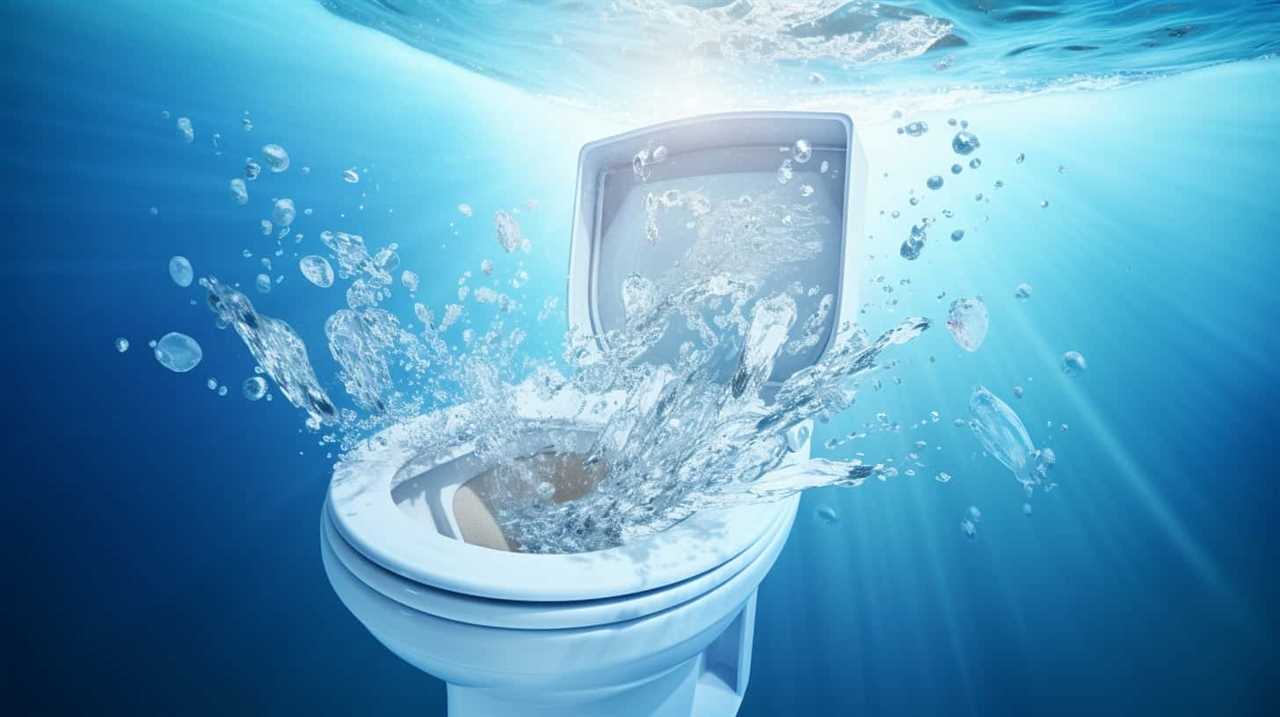Hey there, folks!
Ever found yourself staring at a toilet bowl that just won’t fill up with water? Trust me, I’ve been there too.
But fret not, because in this informative article, I’m going to walk you through the possible causes and solutions for this frustrating problem.
From checking and adjusting the water supply to troubleshooting the fill valve, we’ll cover it all.
So, let’s dive in and get that toilet bowl back to its full, functioning glory!
Key Takeaways
- Possible causes for a low water level in the toilet bowl include a clogged pipe and leaks or cracks in the pipes.
- Checking and adjusting the water supply to the toilet involves locating the water shut-off valve near the base of the toilet and turning it clockwise to shut off the water supply. Signs of a faulty fill valve should be checked, and water pressure in the toilet should be increased if necessary.
- Troubleshooting the toilet tank fill valve includes checking for signs of leakage or unusual sounds, adjusting the water pressure using the adjustment screw on the valve, and replacing the fill valve if necessary. Manufacturer’s instructions should be followed for replacement, and professional help should be sought if needed.
- Fixing a clogged or partially blocked toilet drain involves checking for signs of a clog or blockage in the toilet drain, using a plunger or a toilet auger to dislodge the clog, trying a toilet bowl cleaner designed to dissolve clogs, and calling a professional plumber if all else fails.
Possible Causes for a Low Water Level in the Toilet Bowl
If your toilet bowl isn’t filling up with water, one possible cause could be a clogged pipe. When the pipe leading to the toilet is blocked, water cannot flow freely into the bowl, resulting in a low water level.
Another common cause for a leaking toilet is a faulty fill valve. This valve controls the flow of water into the tank, and if it is not functioning properly, it can cause inadequate water supply to the bowl.
To increase water pressure in the toilet, you can try adjusting the fill valve or replacing it if necessary. Additionally, checking for any leaks or cracks in the pipes and ensuring that the water supply line is fully open can help maintain proper water pressure.
How to Check and Adjust the Water Supply to the Toilet
To check and adjust the water supply to your toilet, start by locating the water shut-off valve. This valve is usually located near the base of the toilet, on the wall or floor. Once you’ve found the valve, turn it clockwise to shut off the water supply to the toilet.
Here are some signs that your toilet fill valve may be faulty:
- The water level in the toilet bowl is consistently low.
- The toilet takes a long time to fill up after flushing.
- You hear a hissing sound coming from the toilet tank.
- There are water leaks around the base of the toilet.
If you’re experiencing any of these issues, it’s important to increase the water pressure in your toilet and check the fill valve for any problems. Troubleshooting the toilet tank fill valve will help you resolve these issues and ensure proper water flow in your toilet.
Troubleshooting the Toilet Tank Fill Valve
When troubleshooting the toilet tank fill valve, it’s important to check for any signs of leakage or unusual sounds. These could indicate a problem with the valve that needs to be addressed.
One common issue is an improper water pressure, which can prevent the tank from filling up properly. To adjust the water pressure, you can turn the adjustment screw on the valve clockwise to increase the pressure or counterclockwise to decrease it.
If adjusting the water pressure doesn’t solve the problem, you may need to replace the fill valve altogether. This can be done by following the manufacturer’s instructions or seeking professional help if needed.
Once the fill valve is functioning correctly, you can move on to fixing a clogged or partially blocked toilet drain.
Fixing a Clogged or Partially Blocked Toilet Drain
First, check for any signs of a clog or blockage in your toilet drain. If you notice that your toilet bowl is not filling up with water or if it starts to overflow, it is likely that there is a clog in the drain. Don’t panic, there are a few steps you can take to unclog your toilet and prevent any further damage.
Here are some tips to help you fix the issue:
- Use a plunger to try and dislodge the clog.
- If the plunger doesn’t work, try using a toilet auger or a plumbing snake.
- Consider using a toilet bowl cleaner specifically designed to dissolve clogs.
- If all else fails, it may be necessary to call a professional plumber for assistance.
When to Call a Professional Plumber for Help
If you’re experiencing persistent clogs or are unable to unclog your toilet using basic methods, it may be time to reach out to a professional plumber for assistance. While there are common DIY toilet repairs that can be done, sometimes the issue goes beyond what can be fixed with simple tools and techniques.
One sign that you may have a toilet water supply issue is if your toilet bowl is not filling up with water properly. This can be caused by a variety of problems, such as a malfunctioning fill valve or a blocked water supply line. A professional plumber will have the expertise and specialized tools to diagnose and repair these issues, ensuring that your toilet is functioning properly once again.
Don’t hesitate to call for help when you need it.
Conclusion
So there I was, staring at my toilet bowl wondering why it wasn’t filling up with water. Turns out, there are a few possible causes for this annoying issue.
Luckily, I found some simple solutions to check and adjust the water supply, troubleshoot the fill valve, and even fix a clogged or blocked drain.
But hey, if all else fails, don’t hesitate to call a professional plumber. Trust me, they’ve seen it all!
Now go forth and conquer your toilet troubles with confidence.










